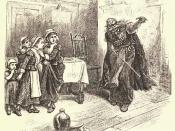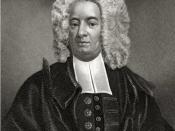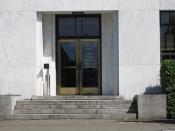The Salem witchcraft trials resulted from a climate of repression, religious intolerance, and social hierarchy combined with fanaticism and the oppression of women. The Puritan leaders used the trials as a way to control the community and to prevent change in the strict social hierarchy. The trials ensured that the teachings of the church would be followed anyone not following the church was simply accused of being a witch and punished accordingly. Witchcraft was considered a crime, and punishment was severe. The first recorded incidents of Witchcraft originated in the mind of a young girls who would supposedly use crystal balls to try and predict their future. These young girls turned to practices outside the church in order to break the monotony of their lives. Thus, they were open to listening to the slaves, like Tituba. Tituba was a slave whom practised a form of fortune telling based on voodoo.
However, fortune telling was in direct conflict with puritan ideology, which forbid the act because only god can predict the future. Therefor, anyone caught looking into the future was a sinner. 'God who reveals all things in his own good time does not permit his providence to be tempted. Only the devil will stoop to such devices, therefor to attempt by magical means to see into the future is to traffic with the devil.'
Witchcraft was a rebellion against good, and therefor a sin in the bible and punished as a capital crime. Trials were held in order to uphold the social hierarchy, but the trials soon began to be aided and effected by disputes among the villagers. In Salem no one was immune to the increasing social tensions and hostility, not even the church. At separate times, two ministers, reverends James Bayler and George Burroughs chose to leave the...


